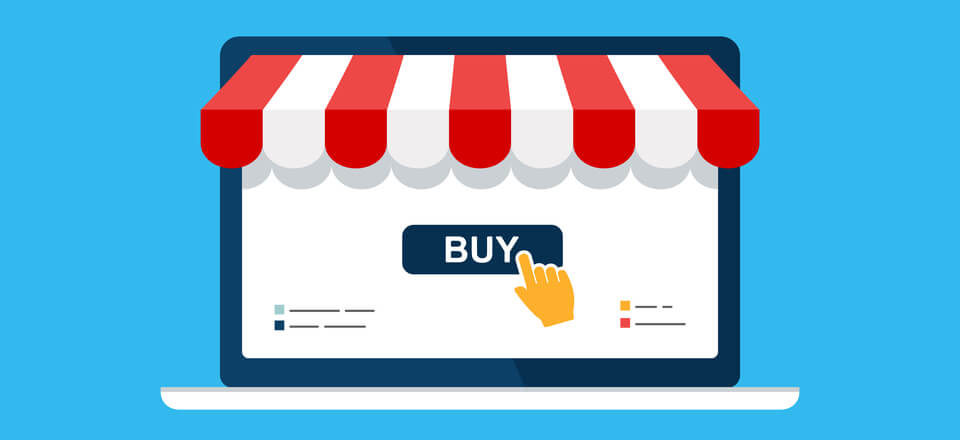The total value of global retail ecommerce sales will reach $3.45T by the end of 2019, and by the year 2040 it is estimated that about 95% of all purchases are expected to be vie ecommerce. In the light of these numbers it is quite a good idea to put your business online, or if you are just starting, online is the best place to do so.

Why Shopify?
Well there are for sure a lot of platforms on which you can build your business :
- Wordpress WooCommerce
- Magento
- Shopify
- BigCommerce
- Wix
- PrestaShop
- Weebly
But for most their drawbacks may outweigh their benefits. WooCommerce for example is a Wordpress plugin, so it may not be too fast, and also not too intuitive to set up. Magento, another example, is mainly used for large webshops with 1000+ pages/products so may not be the solution for your first online business. Shopify may just be perfect solution for any business, small or big.
Do not take this article as a tutorial per se, but more like a guideline when starting, or improving your Shopify store. In case you need professional assistance starting your business we would gladly help you out. Just give us a word by contacting us and we would gladly help to set up your store.
The design and structure are the two things that can make a difference out there. Even if your prices are not as competitive as one might expect, if your store looks and feels professional, your visitors will gain trust and your conversion rates will go up.
Step one
I am assuming that from the start you have a good idea on the type of store you would like start. You can have a traditional business with your own physical inventory, a dropshipping business, affiliate market store or any kind of online ecommerce type of business.
First you have to create an account, choose your plan and name your shop.
Shopify offers four different plans:
- Shopify Basic costs $29 per month, with 2.9% + 30¢ per online transaction.
- The main Shopify plan costs $79 per month, with 2.6% + 30¢ per transaction.
- Advanced Shopify costs $299 per month, with 2.4% + 30¢ per transaction.
- Shopify Plus, a more advanced plan starts at $2000 per month
Each plan has more and more features and you can choose based on what you need. View detailed info about each plan here.
When naming your shop you can choose any name, it does not really matter because once you link your domain to your shop, the domain name will be the one visible to the public.
The next thing to do should be to choose a theme for your store.
Of course you can make one or ask for help from the many Shopify experts out there to tailor a theme that should fit your needs.
Shopify offers a great collection of themes, some are free and some are paid, you can find one that should fit your needs.
Have a good idea of your shop`s structure and design when choosing the theme.
If you are willing to sell many products, for example car parts, make sure the theme you choose has a good support of sorting, searching and displaying your products.
Do not rush this step. God did not make the world in one day, so why would you make such a big decision in a day. Especially if you choose a paid theme. These start at about $48 - $50 for third-party themes, even more for those developed by Shopify and if you do not like it, it is money lost right from the start.
Ask for a second opinion. The more opinions, the better.
Step two
It is now time to install your chosen theme on your shop. It does not really matter from where you bought the theme, be it Shopify, Themeforrest, or another platform, you do not have to have any tech skills to install it. If it is from Shopify, it will be automatically installed, if it is form an external source, you will get a .zip file which can be uploaded easily and Shopify does the rest.
The longest and maybe the hardest thing you will have to do now is to customize your shop. From your dashboard, click on the customize button belonging to your new theme, and you will be taken to a screen from where you can make most of the necessary changes for your store to take shape. It is quite easy to work with, intuitive and somewhat like drag and drop, so again no tech skills are required.
The design and structure is up to you to decide, but again do not rush this step. The first thing a user sees when visiting your shop is the aftermath of your choices, so it is a big step.
Choose your colours well. The world of ecommerce have a lot of UX "rules" like the colour of the buttons, text, font-size, image sizes etc so make sure you read as much as you can because even a different colour button may have some impact on your sales.
Step three
You now have to add the products to your store. The main part of your business.
Shopify makes it really easy to do this. For each product you add, you must upload images, add a title, description and price. These are the required fields.
You can also add multiple variants for each product. For example different sizes for clothing, different colours, packs of 2-3 products etc.
Shopify can also manage your inventory if you like to. This is a great feature, because you can not be permanently watching your inventory to know when a product is sold out and remove it from the shop.
Each product can also have multiple tags. These can be used for mainly for searching or sorting products. Best use case is for sorting products in collections by tags.
Create collections. Collections represent exactly what the name says. They group products into categories. There are two types of collections:
- Smart collections. Also known as automatic collections. The products are added automatically to the collection, using some defined rules you can choose.
- Manual collections, or simple collections. The products are added manually to the collection. It may not be the best choice if you have a lot of products
It is up to you on how you choose to make the collections and how to sort the products, but again it is an important decision, because the products are the main actors on the stage of your shop.
Step four
Your shop is now almost ready, but for now it is just a simple website. In order to sell anything you have to set up payments and shipping policies.
Decide where your shop will make sales. This can mean only the country of residence, nearby countries, specific countries or even the whole world.
From your shop`s settings, from the shipping tab you must set the apropiate shipping policies. You can also integrate third-party shipping providers using their provided api`s.
When an order is placed, the apropriate shipping policy is chosen.
Shipping policies can be price-based, zone-based, weight-based or a combination of them.
The step that brings the money are payment providers. Most customers will use an online payment method so for this step Shopify payments and choosing Paypal or Stripe as alternate method should be enough. Shopify offers lots of helpful details on payments.
Find out how to set up Shopify payments here.
Step five
After setting up everything on your shop, give it a test.
Place an order, pay it and see how it works. If you like the experience, it means other should too.
Ask your friends to do the same thing. Tell them to break your shop, to find out what flaws it has, if any.
To make your shop visible to the public, select preferences from the dashboard and disable the password protection screen. Your visitors can now visit your store. You can see 2 fields for title and meta description. These represent how your store is called and described on the internet. Make sure to write a good and descriptive title and try to keep it short. The description can be longer (160-180 characters). It is important that the most important keywords should be present here.
Connect your domain, or buy a domain then connect it and you are done!
Make your shop known. Share it on every social network.
Create public pages on Facebook, Twitter, Instagram etc, set up facebook commerce.
If you have a physical business create a google myBusiness account.
Social media is the best way to make yourself heard fast.
Create ads on google and social media.
From a SEO point of view, if your domain is new, it will take a couple of months to get known. You can also hire professionals for SEO.
In case of a new domain, even with the best SEO strategies it might take up to six months untill you see good results so be patient.
You can find more info regarding SEO for you store here.
Create a blog. Write articles regarding your stories and your products. People love to read and if you have quality content, more traffic will come and with traffic comes sales
On average, only 2.86% of ecommerce website visits convert into a purchase, so do not put your hopes up right from the beggining
There are between 12M to 24M ecommerce sites in the world, so make yours stand out between them. Be the top 0.1%.
Feel free to drop your opinion if this article was helpfull.

